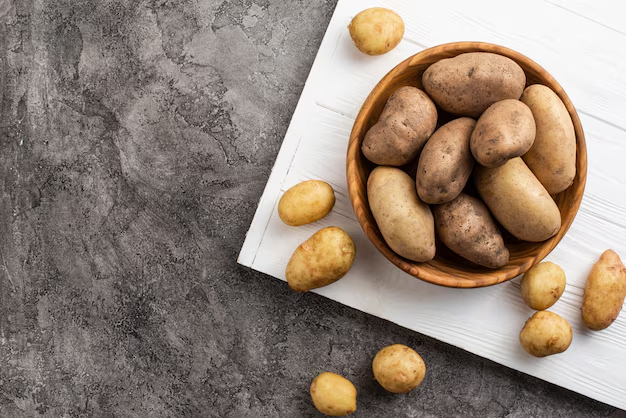Are Potatoes Safe for Diabetics? What You Need to Know
For many individuals, potatoes are a beloved staple, gracing dinner tables worldwide. Yet, if you're managing diabetes, you might wonder if this versatile tuber should still have a place on your plate. The question isn't just about nutrition; it's also about health management and lifestyle adjustments, which are vital components of diabetes care.
Understanding Potatoes’ Impact on Blood Sugar
Potatoes are high in carbohydrates, which means they can affect blood sugar levels significantly. Carbohydrates break down into glucose, leading to a potential spike in blood sugar. This reaction can be concerning for diabetics who must monitor and manage their blood glucose levels carefully. However, the impact of potatoes on blood sugar can vary based on several factors:
- Preparation method: Boiled, baked, and mashed potatoes may have different effects on blood sugar. Generally, boiled potatoes have a lower glycemic index (GI) compared to mashed or fried varieties.
- Portion size: Controlling portions is crucial. A small, controlled serving of potatoes can be part of a balanced meal plan.
- Accompaniments: Pairing potatoes with fiber-rich vegetables, lean proteins, or healthy fats can help slow the rise in blood sugar levels.
Should Diabetics Avoid Potatoes Entirely?
The answer isn't black and white. Potatoes are rich in vitamins, minerals, and dietary fiber, offering health benefits when consumed mindfully. Moderation is key, along with careful planning of meals to ensure they fit within your carb budget for the day. Consulting with a healthcare professional or dietitian can help tailor dietary choices to your specific needs and improve diabetes management.
Beyond Diet: Financial Support for Health Needs
Managing diabetes isn't just about food—it's also about navigating the financial aspects of healthcare. Whether it's affording medications, accessing nutritional counseling, or investing in diabetes-friendly food options, the costs can add up. Fortunately, there are several financial assistance programs available:
- Government Aid Programs: Seek out programs like Medicaid or Medicare, which may offer coverage for diabetes-related supplies and services.
- Financial Assistance and Debt Relief: Organizations and nonprofits might provide support for individuals facing financial hardships due to medical expenses.
- Educational Grants and Resources: Some institutions offer scholarships or free courses on diabetes management, empowering patients with the knowledge they need.
Through a combination of dietary education and financial support, managing diabetes can become more achievable and less burdensome.
Key Financial Assistance Options for Diabetes Management:
- 🏥 Medicaid/Medicare: For medical coverage and supplies
- 💊 Pharmaceutical Assistance Programs: Help with medication costs
- 🌿 Nutrition and Health Workshops: Free educational opportunities
- 📈 Budget Counseling Services: Manage and plan diabetes-related expenses
- 🚪 Local Community Health Resources: Access to food banks and wellness services
By integrating these resources, individuals with diabetes can lead healthier, more financially stable lives.
